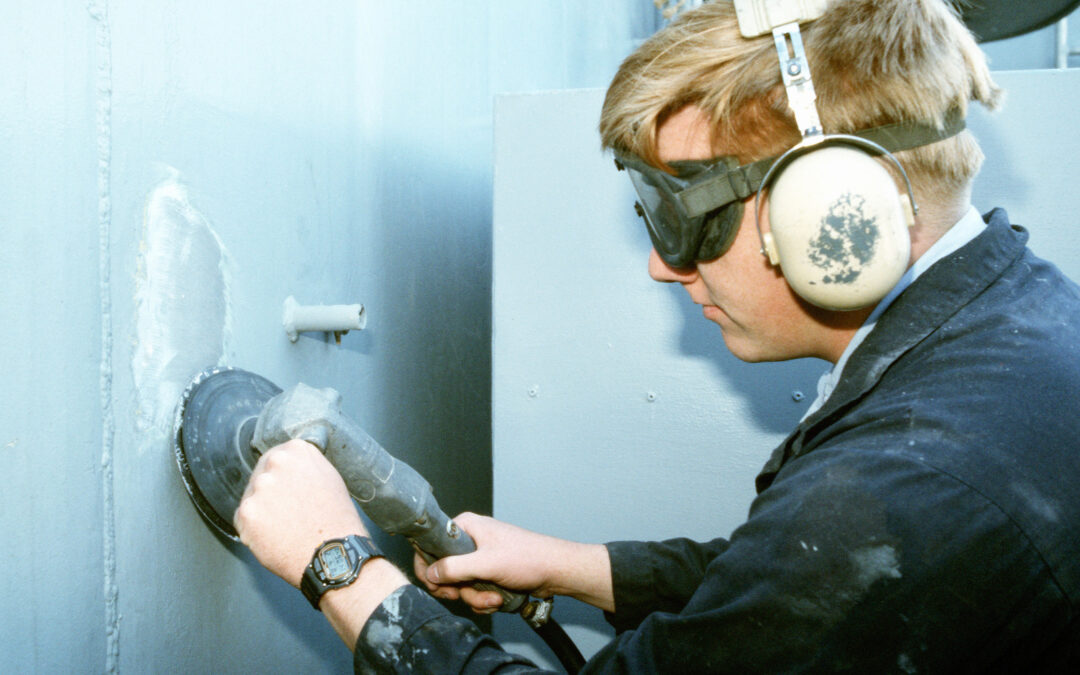Noise is one of the most prevalent occupational health hazards. Exposure to high levels of noise can cause permanent or temporary hearing loss, depending on the intensity and duration of exposure. The Occupational Safety and Health Administration (OSHA) hearing conservation program, OSHA 1910.95, outlines the employer’s responsibility to protect workers with significant noise exposures from hearing impairment. Noise exposure monitoring, audiometric testing, and training are all tools to measure noise exposure, track hearing health, and ensure employees are trained on noise hazards and how to use personal protective equipment for their job position.
Noise Exposure Monitoring
If an employee’s noise exposure meets or exceeds an 8-hour time-weighted average of 85 decibels, the employer must develop and implement a noise monitoring program. The monitoring must be conducted in a way that identifies employees for inclusion of the program and facilitates the proper selection of hearing protection. If there is significant variations in noise level for a job position, the employer must use representative personal sampling to determine the 8-hour-time-weighted-average. Monitoring should be repeated whenever a change in production, process, equipment, or controls increases noise exposures to the extent that additional employees may be exposed at or above the action level or current hearing protection is inadequate to protect against noise levels.
Employers MUST notify any employee exposed at or above an 8-hour time-weighted average of 85 decibels of the results of the monitoring.
Audiometric Testing
Audiometric testing measures employees hearing over time. Employers must implement an audiometric testing program and make audiometric testing available to all employees whose noise exposure equals or exceeds an 8-hour time-weighted average of 85 decibels. Audiometric testing must also be free to employees.
Audiometric testing must be performed by a licensed or certified audiologist, otolaryngologist, or other physician, or by a technician who is certified by the Council of Accreditation in Occupational Hearing Conservation, or who has satisfactorily demonstrated competence in administering audiometric examinations, obtaining valid audiograms, and safely using, maintaining, and checking calibration and proper functioning of the audiometers being used.
Within 6 months of an employee’s first exposure at or above the action level, the employer must establish a baseline audiogram. Follow-up audiograms must be conducted annually and compared to the baseline to determine if the audiogram is valid and if a standard threshold shift has occurred. If the annual audiogram shows that an employee has suffered a standard threshold shift, the employer may obtain a retest within 30 days and consider the results of the retest as the annual audiogram.
If a comparison of the annual audiogram to the baseline audiogram indicates a standard threshold shift has occurred, the employee should be informed in writing, within 21 days of the determination. If the threshold shift has occurred due to work related activities, the employer should take steps outlined in OSHA 1910.95(g)(8)(ii)(A) – 1910.95(g)(8)(ii)(D) to ensure compliance.
Training & Recordkeeping
Employees should be trained annually regarding the following:
- the effects of noise on hearing,
- the purpose of hearing protection,
- the advantages, disadvantages, and attenuation of various types of hearing protection,
- instructions on selection, fitting, use and care of hearing protection, and
- the purpose and procedure of audiometric testing.
The training should be provided at the time of annual audiometric testing and should be updated with changes in protective equipment and work processes. Noise exposure records should be kept for a minimum of two years. Records of the audiometric tests results should be maintained for the duration of employment of the affected employee, plus 30 years.
Is your facility’s hearing conservation program compliant with OSHA requirements? Don’t guess or wait for OSHA to show up. The Spencer-SHE team has over 40 years of experience evaluating compliance programs and developing plans to meet OSHA requirements and company goals. Contact us!

